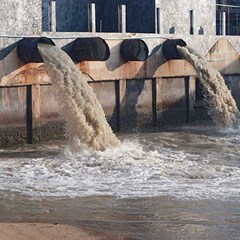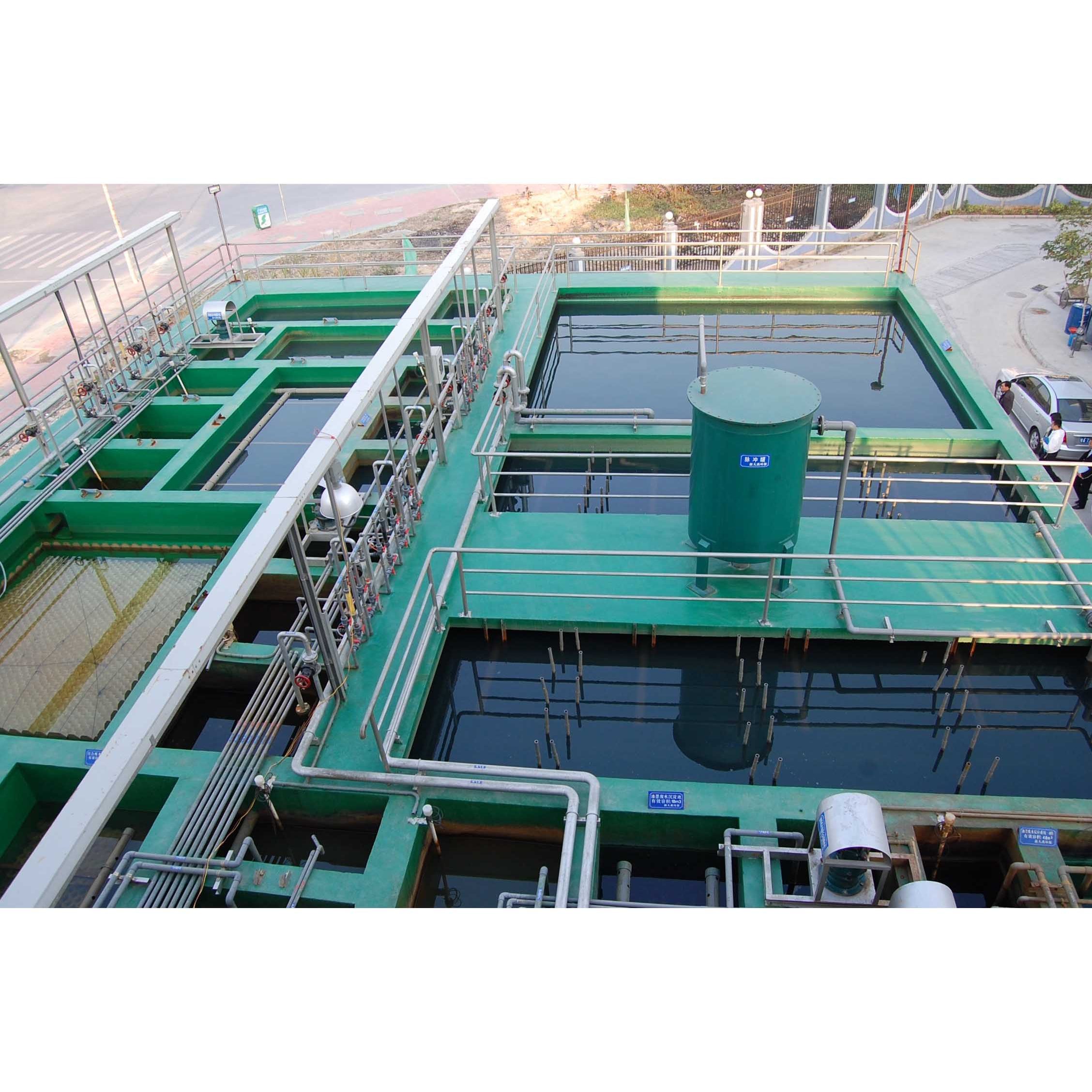Secret Methods in Hazardous Waste Water Treatment Processes
The treatment of industrial wastewater is an essential aspect of ecological management, involving an array of strategies designed to reduce the effect of pollutants. Advancements in innovations such as membrane filtering and progressed oxidation processes supply innovative solutions for enhancing treatment efficacy.
Physical Therapy Approaches
Just how effectively can physical treatment methods deal with the complexities of industrial wastewater? Physical treatment approaches play a critical function in the preliminary stages of wastewater management, concentrating primarily on the elimination of solids and huge particulates. Strategies such as filtering, sedimentation, and flotation are important for lowering the concentration of put on hold solids, therefore boosting the effectiveness of succeeding treatment processes.
Sedimentation entails the gravitational settling of solids, permitting for the splitting up of much heavier materials from the wastewater. This technique is particularly reliable in making clear water prior to biological or chemical treatments.
In addition, flotation protection approaches, which utilize air bubbles to raise suspended solids to the surface area for removal, are effective in treating wastewater with high focus of fats, oils, and greases. On the whole, physical treatment approaches act as an essential primary step in the extensive monitoring of industrial wastewater, making certain that the load on succeeding therapy stages is decreased and enhancing general therapy effectiveness.
Chemical Treatment Techniques
While physical therapy techniques prepared for effective wastewater monitoring, chemical therapy techniques are essential for addressing the extra complicated contaminants commonly located in commercial effluents. These approaches make use of different chemical representatives to precipitate, counteract, or oxidize damaging substances, making sure a much more comprehensive elimination of contaminants.
One common method is coagulation and flocculation, where chemical coagulants such as aluminum sulfate or ferric chloride are contributed to advertise the aggregation of put on hold bits. This process boosts solid-liquid separation, minimizing turbidity and boosting water top quality. In addition, neutralization processes are utilized to readjust the pH of wastewater, using acids or bases to reduce the effects of acidic or alkaline streams, respectively.
Oxidation-reduction reactions play a critical role in degrading natural contaminants and microorganisms. Chemical oxidants like ozone, chlorine, or hydrogen peroxide are made use of to break down complex natural substances, making them much less harmful or a lot more biodegradable. Progressed oxidation processes (AOPs) combine multiple oxidation techniques to enhance contaminant elimination performance.
Organic Therapy Procedures
The effectiveness of wastewater treatment is substantially boosted by organic therapy procedures, which harness the all-natural metabolic activities of bacteria to decay raw material and remove pollutants. Industrial Waste Water Treatment. These processes primarily include anaerobic and aerobic digestion, each tailored for specific kinds of wastewater
Aerobic therapy procedures use oxygen to support microbial development, advertising the failure of natural contaminants into carbon dioxide and water. Usual techniques consist of triggered sludge systems, where aeration read storage tanks help with the mixing of wastewater with microbes, and flowing filters, which motivate biofilm development on media surface areas.
Alternatively, anaerobic treatment procedures take place in the absence of oxygen, using anaerobic bacteria to decompose natural matter, leading to biogas production, a renewable resource source. Anaerobic digesters are frequently employed in commercial setups for this purpose, properly minimizing the volume of sludge while producing important biogas.
The selection of an organic treatment approach relies on wastewater characteristics, therapy goals, and governing standards. The assimilation of biological procedures in wastewater treatment not just improves pollutant elimination efficiency yet also advertises sustainability by decreasing chemical usage and sustaining source healing.
Advanced Oxidation Processes

Common AOP techniques consist of Fenton's reagent, ozonation, and photocatalysis. Fenton's reagent, a combination of hydrogen peroxide and ferrous iron, militarizes the formation of hydroxyl radicals, making it reliable for treating wastewater containing phenolic substances and other stubborn compounds. Ozonation makes use of ozone as a powerful oxidant, qualified of weakening a vast array of natural pollutants while concurrently disinfecting the effluent. Photocatalysis utilizes light-activated catalysts, such as titanium dioxide, to boost go to this web-site oxidation reactions and get rid of impurities.
AOPs use several advantages, including lowered sludge manufacturing and the capacity to treat wastewater with high focus of natural pollutants. The application of AOPs needs careful consideration of functional criteria and cost-effectiveness, ensuring that these advanced techniques are appropriately integrated right into existing wastewater therapy systems.
Membrane Layer Purification Technologies

Microfiltration is effective for eliminating put on hold solids and microorganisms, while ultrafiltration targets smaller organic particles and infections. Nanofiltration links the gap between ultrafiltration and reverse osmosis, successfully getting rid of divalent ions and organic compounds. Reverse osmosis provides the highest level of purification, utilized mainly for desalination and getting rid of mono-valent ions.
Membrane layer technologies provide various advantages, consisting of low energy usage compared to standard therapy methods, modular design for scalability, and the potential for water recovery and reuse. Challenges such as membrane layer fouling and the demand for normal upkeep must be addressed to make certain system efficiency. On the whole, membrane layer purification modern technologies stand for a crucial element of contemporary industrial wastewater therapy approaches, advertising sustainability and resource conservation in water monitoring.
Verdict
In conclusion, industrial wastewater treatment uses a diverse selection of methods, including physical, chemical, biological, and progressed methods. Continued innovations in these techniques will better improve the effectiveness and performance of wastewater treatment procedures in industrial settings.
The therapy of commercial wastewater is a vital facet of environmental monitoring, involving a variety of methods made to mitigate the influence of contaminants.How successfully can physical therapy methods address the intricacies of industrial wastewater?Advanced oxidation processes (AOPs) stand for a cutting-edge method in commercial wastewater therapy, made to effectively deteriorate natural pollutants that are commonly immune to standard therapy approaches (Industrial Waste Water Treatment).In conclusion, industrial wastewater therapy utilizes a varied variety of strategies, including physical, chemical, biological, and advanced techniques. Continued developments in these methods will certainly even more improve the effectiveness and efficiency of wastewater therapy procedures in industrial setups